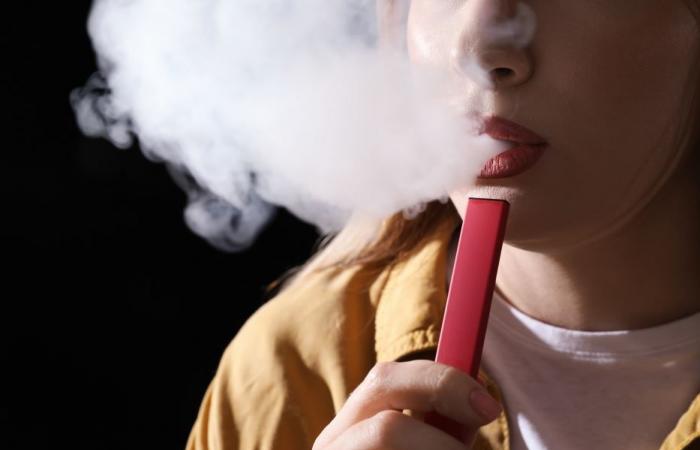Are electronic cigarettes (e-cigs) and heated tobacco products an alternative to traditional smoking and a way to help people break free from addiction, or are they a different but equally dangerous habit, which can even lead to tobacco use?
Two different positions, supported by doctors and scientific studies, according to what emerged in recent days from experts from the Italian Society of Internal Medicine (Simi) and from data provided by the Research Center for the Reduction of Harm from Smoking (Cohear, from the English expression) in Catania.
The review of the scientific literature carried out by a group of Simi experts (Paola Andreozzi, Gualberto Gussoni, Giorgio Sesti, Nicola Montano, Antonello Pietrangelo) raised the alarm about the harm of electronic cigarettes (e-cigs) and heated tobacco products. ), especially in relation to young people.
The review, published in the journal Internal and Emergency Medicinerecognizes that, faced with the harm of smoking and the difficulty in quitting, the use of electronic cigarettes and heated tobacco products can be a tool to facilitate the end of addiction.
However, Simi experts warn of two risks: the first is the damage to the lungs that still appear to affect consumers of e-cigs and heated tobacco; the second is the fact that, thanks to clever marketing campaigns, these products are revealed to be a factor that fuels the number of smokers, attracting young people in particular.
Conversely, Cohear experts underline the validity of using e-cigs to reduce the smoking rate, bringing data from the experience of the opposite policies adopted in Australia and New Zealand.
Simi reports that COPD and asthma are often present together in smokers and those who have repented of smoking: in fact, smoking is a risk factor for COPD and a trigger for asthma. About one in four Italians smokes (almost one in three in the 18-34 age group) and the number is struggling to decrease further. In addition, 35-45% of COPD patients smoke (only 1 in 5 has never smoked) and half of the people who suffer from asthma are active smokers or have repented of smoking.
Although, Simi’s review points out, there is evidence of the potential benefits in the transition from traditional smoking to e-cigs and heated tobacco products, there is also evidence of their intrinsic toxicity and indications of a role in promoting smoking initiation of the younger ones.
In the first area, internal medicine doctors report that inhaling e-cig aerosols can trigger inflammation of the airways (although with less violence than cigarette smoke) and that e-cig vapors are toxic to the cells (especially in highly flavored liquids), influence their proliferation and alter their morphology, similar to the nicotine in cigarettes. They can also stimulate the production of oxygen free radicals, which damage DNA and reduce cell vitality. As well as increasing susceptibility to respiratory infections and exacerbating the symptoms of asthma and COPD.
In light of these data, Simi is concerned about the fact that thanks to attractive design and the use of aromas appreciated by young people, marketing is able to make converts for e-cigs among the new generations, thus also encouraging an approach to traditional smoking .
In fact, Istat data indicates that the use of e-cigs is slowly but steadily increasing: if in 2014 there were 800 thousand people over the age of 14 who consumed them, in 2021 they had become one and a half million.
Different is the assessment of the Cohear research data, presented in recent days in a press conference promoted by Mariolina Castelleone (vice president of the Senate) and offered to the members of the 10th permanent commission (Social affairs, health, public and private work and social security). It is a summary document of the No Tobacco Day 2024 signed by students, doctoral students and specialists who coordinated the annual event of the World Anti-Smoking Day held last May 30 at the University of Catania.
«Our hypothesis – said Giovanni Li Volti, director of Cohear – is that the use of electronic devices is associated with a News score (the index for evaluating the severity of a pathology, ndr) lower. By evaluating the data on admission values, the length of stay in the emergency room and the negative outcomes, one can already observe, as already happens in the emergency room of the Policlinico of Catania, an important contribution to the statistics relating to access to the emergency room, waiting times, number of admissions and specific diagnoses of the smoking patient».
Riccardo Polosa, founder of Cohear, gave examples of two countries with different policies for reducing the incidence of smoking: «While Australia, dedicated to restrictive policies on low-risk systems, is forced to backtrack on its positions, New Zealand, with the promotion of combustion-free systems as effective tools for fighting smoking, has halved the rate of smokers, to the point of almost eradicating the problem».
On the one hand, therefore, the Italian Society of Internal Medicine underlines the risks of “electronic smoking”: «Stopping smoking is not an easy task – admits Professor Giorgio Sesti, president of Simi – but the examination of all the available scientific literature demonstrates that e-cigs and heated tobacco products are far from risk-free alternatives. Their use entails an increased risk of getting asthma and/or COPD and of damaging lung function, compared to non-smokers. Only in the case of a heavy smoker of traditional cigarettes who simply cannot stop smoking can the use of these alternative products be justified in an attempt to mitigate the risk.”
On the other hand, Cohear evaluates the benefits: «We look at the virtuous examples that have brought concrete results in terms of fighting smoking and we follow the results of scientific evidence instead of ideologies» observes Riccardo Polosa.
«The application of the principle of harm reduction as a tool to reduce the number of smokers in Italy – adds Giovanni Li Volti – can have a strong impact on the costs for the healthcare system, especially on the basis of the reforms underway. The study of the economic impact on public health deriving from the possible decision of some smokers to switch to combustion-free products represents a non-negligible dimension that could affect the outcomes in terms of hospitalizations and costs for healthcare personnel”.






